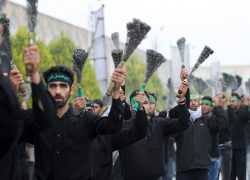admin
admin
Published posts

Isfahan Figures – Jelveh
Nothing!
Mirza Abdulhossein Khan known as “Jelveh”, is one of the scholars of the Naseri era. He was a good-natured and sweet-talker that has written a few poems. Jelveh’s style was as he mostly talked about philosophy and wisdom through humor.

Isfahan Figures – King Abbas Safavid
Fortune and Throne
There are many stories about King Abbas and his kingship. One of these is that he use to wear masquerade himself and go among public.

Isfahanis’ Smart Comments
One Shahi!
Isfahanis are always been known to be funny and smart. Many old texts have also mentioned this characteristic of Isfahani people and have mentioned some examples as well. “Jafar Shahri” writes: “one day an Isfahani goes to the Hakimbashi Bathhouse in Tehran’s Bazaar.

Isfahan’s Neighborhoods
Boz Paghale’e
The story of people’s extremes is a very long and never-ending story; sometimes they become attached to this and sometimes to that. Sometimes they are a religious extremist and sometimes an atheist.

Religious Ceremonies – Tasou’a & Ashura
Tears under the Palm (Nakhl) Tree, above the Flag
One of the very interesting Emam Hossein mourning ceremonies in Isfahan is the “Nakhlbandi” ceremony.

The Spirit of Isfahani People – Courage
Battle Banquet
When you are walking through the Golzar-e Shohada (Martyrs’ Graveyard), you ask yourself why does Isfahan have all these martyrs? Throughout history, we have heard so much about the passion and courage of the people of Isfahan.

Different Places of Isfahan – Local Dialect
Falak (Foot Whipping) Square!
Up until a few years ago, if you wanted give someone directions or ask for directions, you would have definitely come across the word “Falakeh (Square)”.

Isfahan Libraries
The First Libraries of Isfahan
Throughout history we have read and heard that the large and rich libraries of Iran were burnt by the enemies during attacks.

Folklore Literature and Anecdotes
Hunch over Hunch!
In the folklore literature of any nation, there are stories that the extract of those stories becomes anecdotes and becomes part of the vocabulary, literature and culture of its people.

Isfahan Figures: Seyed Mohammad Hosseini Beheshti
Beheshti`s Heaven
One of the great men that his profession and social relationships, his morals and manners was always more dominant in his life than anything else, was “Seyed Mohammad Beheshti”.

Isfahan’s Events: The Printing Industry
The First Printing Machine
Isfahan was also leading in the regards to the printing industry.

Isfahan; World Creative city of handicrafts
The Blessing of Art, The Deprivation of Art
A great man as “Allameh Homaie”, when he documents the life of Isfahan’s artists, somewhere he starts to complain and object.






